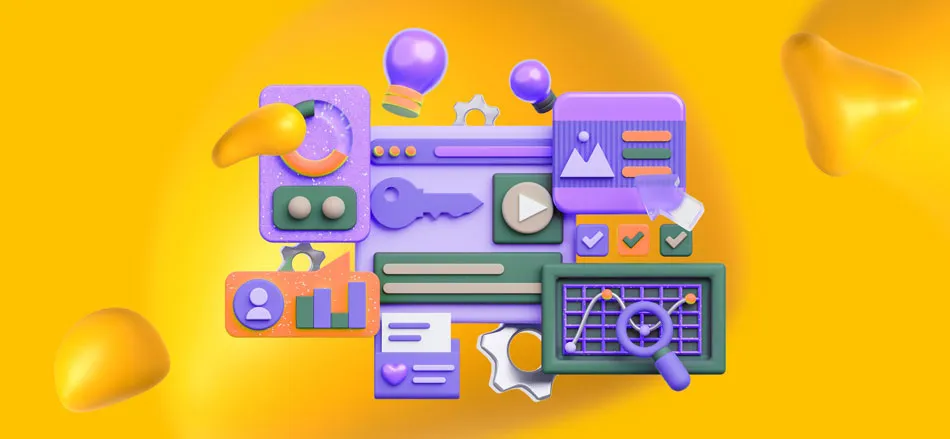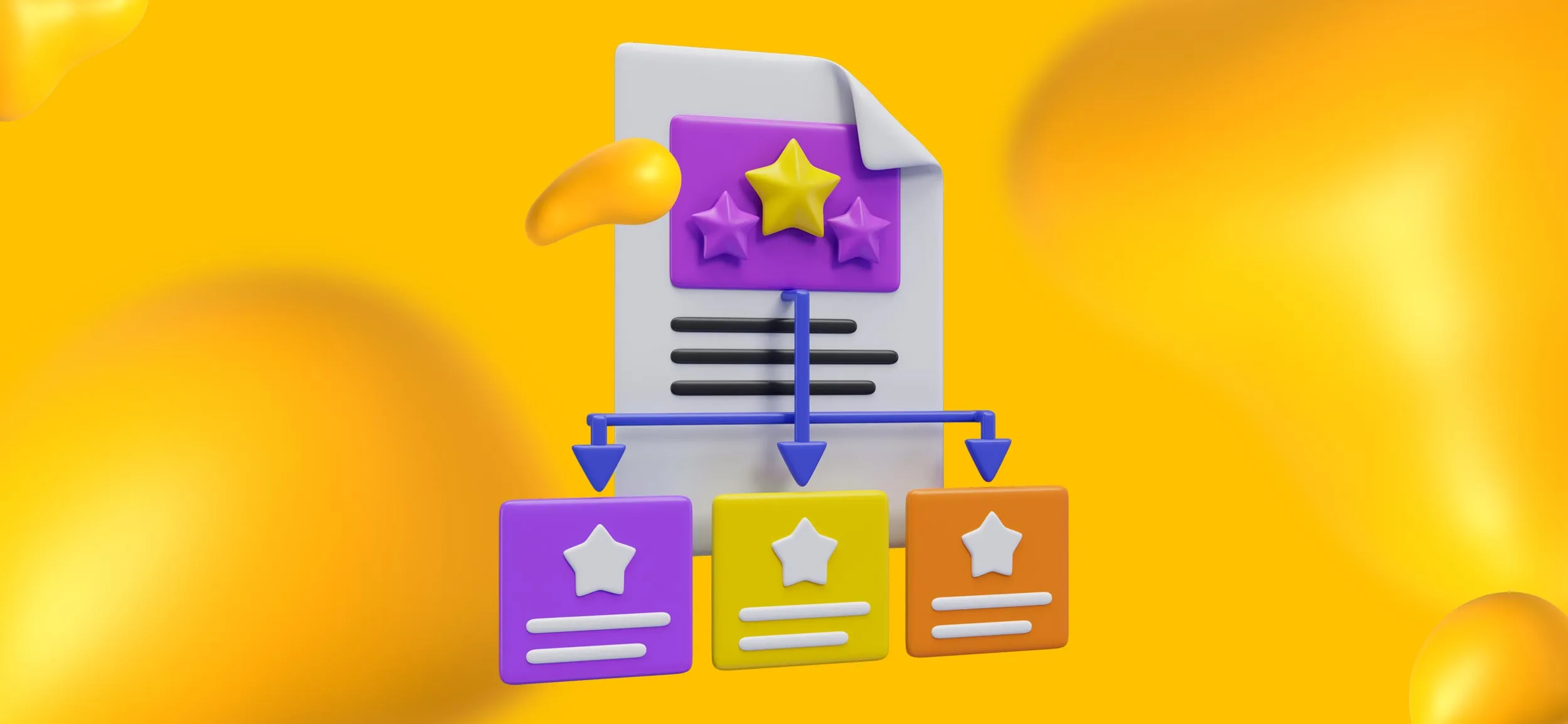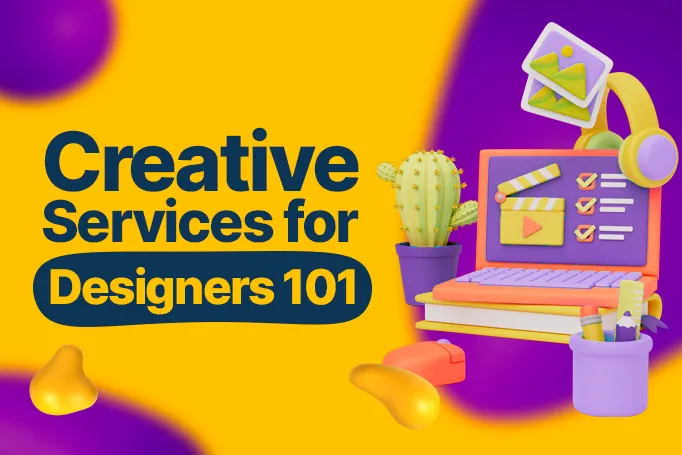Being an artist can be a thankless job.
Clients may be few and far between and the path to getting recognized for your work and making enough for a comfortable living might seem far out of your reach.
But, for those with a keen eye for design and the creativity to bring your ideas to life in innovative and exciting ways, there might be another way to turn your passion and talents into a lucrative career.
Have you considered a career in creative design services?
Creative design services not only give you a platform to showcase your amazing talent but also gives you an opportunity to do what you love and earn a great living while making an impact for businesses all over!
If you’re ready to learn more, then we’re more than ready to tell you all about it!
Keep reading to see how you can transform your passion for design into a career that pays well, brings you satisfaction, and lets you leave your creative footprint on the world!
What are Creative Design Services?

Creative design services are the marketing services that involve artists or designers creating visual content that is purposely tailored to meet specific marketing and communication needs.
This visual content could be anything like brand logos, brochures, business cards, websites, email templates, digital ads, and any other important marketing collateral that needs to look good to effectively do its job.
The title “creative design services” refers to the careers in the wide range of activities responsible for creating this marketing content.
Below are some of the most common ones:
- Graphic Design – Graphic design focuses on creating visual content for a brand's print and digital media. It involves designing graphics for use in advertisements, publications, packaging, and more, with the goal of conveying specific messages or concepts in a visually pleasing way.
- UX/UI Design – UX (User Experience) and UI (User Interface) design focus on creating functional and visually appealing interfaces for a brand's websites, apps, and software. UX designers create the overall feel and experience of a digital product to make sure it’s user-friendly and intuitive, while UI designers deal with the specific aesthetics and interactive elements of the interface.
- Digital Ad Design – Digital ad designers create ads tailored for popular digital platforms like social media, websites, and email campaigns. The goal of a digital ad design is to attract attention and drive user engagement through creative and eye-catching visuals and strategic placement.
- Branding and Logo Design – These services are about establishing the entire visual identity of a brand. Think Nike, Coke, Apple, and Starbucks; the brands with distinctive fonts, logos, color palettes, and styles.
- Marketing Collateral Design – This service includes designing physical and digital marketing materials like brochures, flyers, business cards, and digital banners. These designs support marketing strategies and campaigns, and make sure that all promotional materials are not just great to look at but aligned with the brand’s identity and message.
- Packaging Design – Packaging designers create labels and packaging for physical products, focusing on communicating key information about the product, making it look attractive on the shelves, and protecting the product during shipping.
How to Navigate a Career in Creative Design Services
Any of those sound like something you’d be happy to do?
If you’ve got the artistic talent and a career in creative design services sounds appealing to you, then that’s great! Why not get started?
To help you out, we’ve listed the steps you’ll need to take to get there:
1. Find Your Niche
It’s easier to look for job opportunities if you’ve got a niche, so assess your skills and decide which of those services makes the best use of your unique talents.
Could it be web design? Packaging design? If you’re handy with Adobe After Effects or Animate, it might even be something like motion graphics.
And if you’re a jack of all trades and can do it all, then that’s even better! Since you have a choice, look into what design skills are in highest demand.
2. Build Your Creative Portfolio

Once you have a niche, it’s time to prove you’re the expert that you know you are.
If you don’t already have an online creative portfolio, then create one on a platform like Behance, Dribble, or Portfoliobox.
In your portfolio, you want to include a variety of different projects that demonstrate your skills, creativity, and your ability to handle different types of styles and design work. Tell the story behind each project too. Include a brief about your client’s needs, your creative process, and what you did to meet (or exceed!) your client’s needs.
If you don’t have graphic design work in your portfolio yet, then that’s okay! Work with what you have, just be sure it is showing off what a talented designer you are!
For some more guidance on creating a stunning online creative portfolio, check out our recent blog on portfolio development tips!
3. Freelancing vs. Full-Time Employment
Now that you’ve got your portfolio, you can start looking for work.
So … what kind of work do you want to do, aspiring designer? Do you want to freelance? Do you want an in-house position with a brand? To help you decide, here is a list of pros and cons for each:
Freelancing Careers
Pros
- Flexibility — Freelancers typically have the ability to set their own schedules and choose their work hours, which can offer a better work/life balance.
- Variety of Projects — Freelancing allows designers to work on a diverse range of projects and clients, which can keep the work engaging and encourage the development of different skills.
- Control Over Job Choice — Freelancers can choose which projects they want to take on, allowing them to work on more interesting or higher-paying assignments.
- Potential for Higher Earnings — With the ability to set their own rates and work with multiple clients, freelancers might earn more than they would in a salaried position, especially once they build up a reputation and there's a demand for their services.
Cons
- Inconsistent Income — Freelance work can be inconsistent, with fluctuating income and slow periods where projects are sparse.
- Lack of Benefits — Freelancers don't have employee benefits such as health insurance, paid leave, and retirement plans, which must be managed on their own.
- Isolation — Working alone without a team can be isolating for some, and freelancers may miss out on collaborative opportunities and social time that come with an office environment.
- Self-Management — Freelancers have to manage every aspect of their business, including finding clients, marketing themself, and collecting payments.
In-House Careers
Pros
- Stability — In-house positions usually provide a steady income with predictable pay and set work hours.
- Benefits — Salaried employees receive benefits like health insurance, retirement, sick days, and paid vacations.
- Collaborative Environment — Working as part of a team can enhance creativity, provide different perspectives, and create a sense of community.
- Career Development — Many organizations offer professional development opportunities for their employees, like training and certifications.
- Resources — Companies often have access to better resources, including software, digital art and design tools, and a comfortable working environment.
Cons
- Less Flexibility — Working in-house means you have a set schedule and a less flexible work environment.
- Less Creative Freedom — Working for a single company might mean that all of your work has to stick to a certain set of brand guidelines or creative direction.
- Less Variety — Being tied to one brand or industry might limit the variety of projects you get to work on, which could get repetitive or less challenging over time.
- Office Politics — Navigating office politics and sticking to a set of corporate structures can be both tiresome and distracting.
4. Network, Network, Network
It’s a good idea to do some networking, not just while you’re trying to get your foot in the door as a designer but even after you’re getting consistent gigs and busily advancing your career.
Networking helps you keep your skills sharp, builds strong professional relationships in the industry, and, who knows? You just might meet the right person at your next event!
Here are some ways to network and keep yourself updated on the latest trends and industry news.
- Attend Industry Conferences and Workshops — These events are goldmines for networking, offering opportunities to connect with peers, industry leaders, and potential clients. They can also give you early insight into new technologies or design trends.
- Join Professional Associations — Being part of professional groups like AIGA for graphic designers or UXPA for web designers can boost your networking opportunities and give you access to resources, job boards, and industry publications.
- Online Forums and Social Media Groups — Platforms like LinkedIn groups, Twitter chats, and specialized online communities (like Behance for creatives) allow you to chat with industry experts and other designers and artists from around the world.
- Local Meetups and Networking Events — Look for local meetups, design nights, or portfolio reviews. These smaller gatherings are great for making meaningful connections.
- Webinars and Virtual Conferences — As remote work gains popularity, virtual events have become a valuable networking tool. They can be particularly convenient if travel and time are issues for your networking efforts.
- Alumni Events — Don’t forget to tap into your alma mater’s network! Universities often host alumni networking events which can be an excellent opportunity to reconnect with old faces and meet new professionals.
- Volunteering — Offering your design skills to non-profits or local community groups not only helps out a good cause but also puts you in touch with like-minded professionals and pads your portfolio.
Looking for Another Way?
And if you think you might like a career opportunity that has all the benefits of freelancing and an in-house career combined, then we have another suggestion you might like.
Starting a career in a Creative as a Service platform (such as Designity), is a great alternative to in-house careers, freelancing, or even working for freelance platforms like Toptal, MarketerHire, and more.
Here are some of the benefits that a CaaS career with Designity can bring you:
Benefits of Working for Designity's CaaS Platform

- Steady Stream of Projects — Designity works with many clients, meaning that your talents will always be in high demand.
- Variety of Projects — Designity's many clients also come from a variety of different industries and have a variety of different needs, meaning you'll never get bored with your projects!
- Design Without the Hassle — Designity and our Creative Directors take care of all administrative tasks, like finding projects, collecting payment, and even meeting with clients. This allows you to do what you love without the hassle and stress of the extras.
- Collaboration Opportunities — Working on a platform with other talented creatives and Creative Directors leads to new and exciting collaboration opportunities!
- Flexibility — Set your own hours and work from where you like!
- Growth Opportunities — Learn from the best and grow in your career!
- Competitive Pay — Do what you love and earn what you're worth!
So, what do you think?
Designity is always looking for fresh, new talent to join our creative community, so if a rewarding career with an innovative and tech-ready platform like Designity sounds like just the gig you’re looking for, why not apply today?
Put your skills to the test with our one-of-a-kind application and let’s see where Designity can take you!
This feels like the start of a beautiful friendship.


